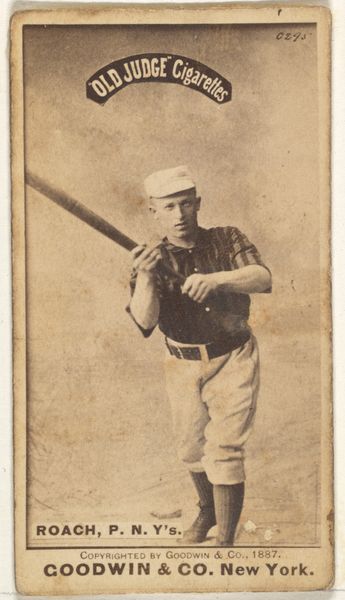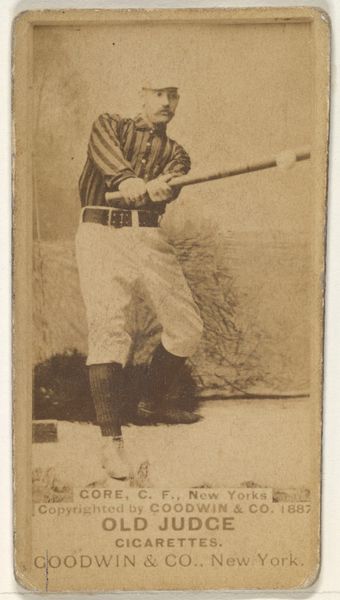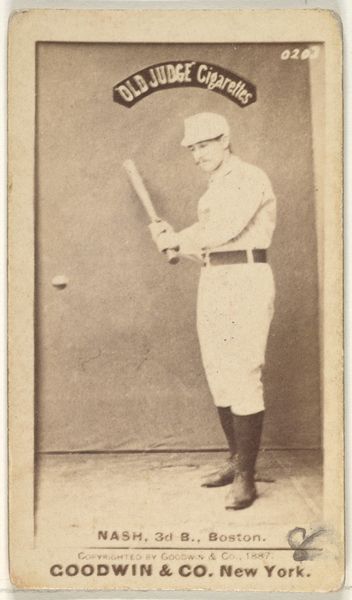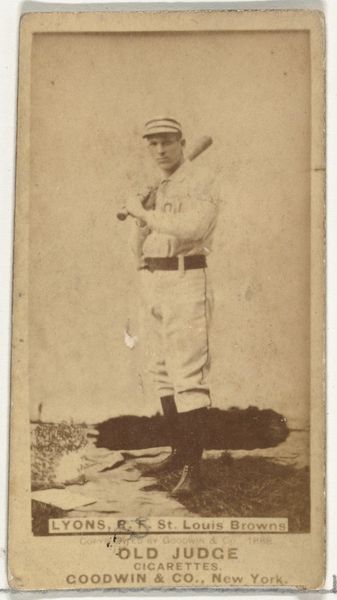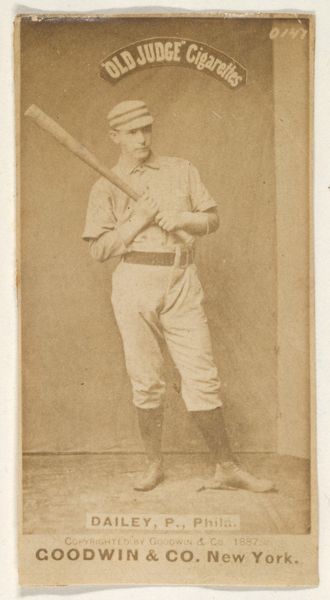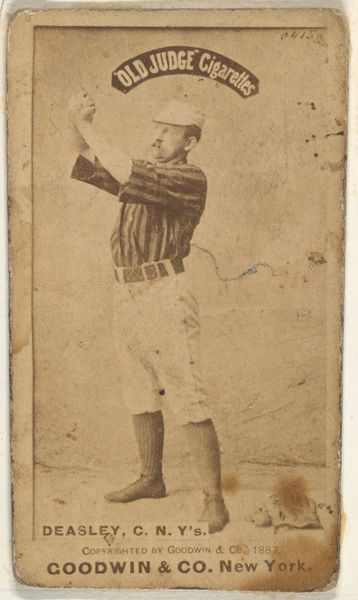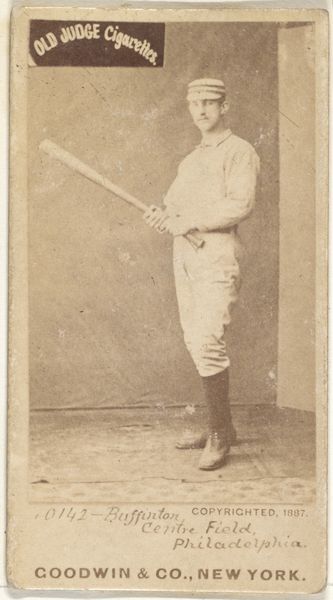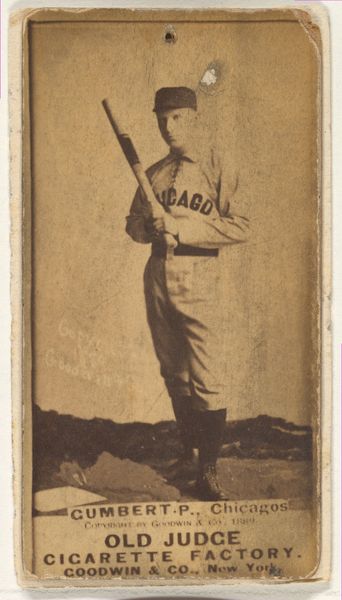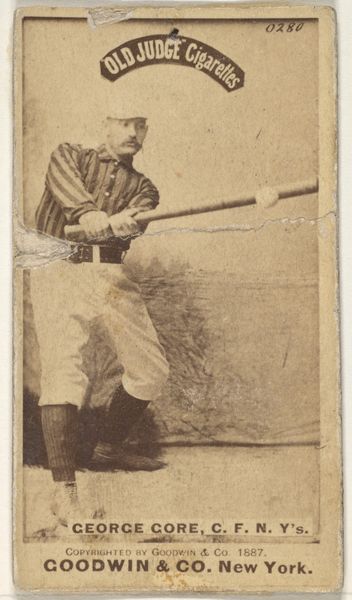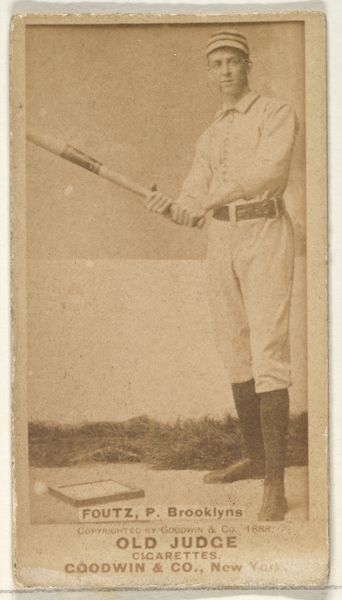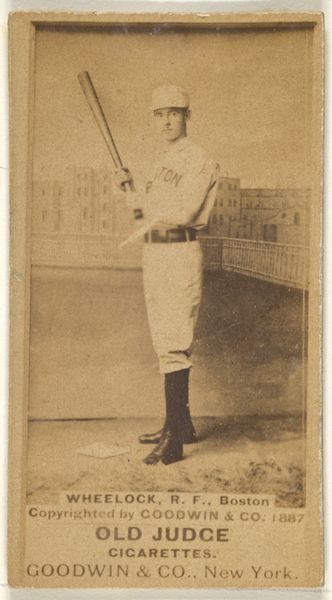
John F. Roach, Pitcher, New York, from the Old Judge series (N172) for Old Judge Cigarettes 1887
0:00
0:00
drawing, print, photography
#
portrait
#
drawing
# print
#
impressionism
#
baseball
#
photography
Dimensions: sheet: 2 11/16 x 1 3/8 in. (6.9 x 3.5 cm)
Copyright: Public Domain
Curator: Here we have a fascinating artifact: a baseball card dating to 1887. It depicts John F. Roach, a pitcher for New York, and it comes from the "Old Judge" series, distributed by Goodwin & Company with their cigarettes. Editor: The sepia tone and the slight blurring around the edges immediately transport me back to the late 19th century. He looks proud, almost defiant, with the baseball bat casually held in his hands. Curator: It’s printed through a photographic process but seems to possess qualities of drawing. The blending of different mediums speaks to a specific moment in media history when distinctions between photography, printmaking, and even painting were less defined. Editor: Baseball itself carries a lot of cultural baggage, doesn’t it? It's often seen as a symbol of American identity, of simpler times, and even ideas of masculinity, all of which are projected onto Roach. And putting these cards in cigarette packs associates this image with adulthood and a burgeoning industry. Curator: Precisely. This mass-produced card also tells us about changes in manufacturing. How advancements in printmaking fueled a culture of collection and advertisement. Baseball cards were instrumental in shaping the cult of celebrity surrounding athletes. Roach becomes a commodity. Editor: And his clothing too—the vertically striped shirt and baggy pants—are more than mere representations of sporting attire. They reflect Victorian-era norms and codes around physical activity, where even recreation was often formalized. I think they speak volumes about what a baseball player embodied in the cultural imagination of the time. Curator: Absolutely, and the fact that the card itself was included in a product like cigarettes makes the relationship between leisure, consumption, and even addiction undeniable. This little card opens into avenues that connect industrial processes, mass media, and advertising. Editor: The card certainly serves as a small window into a much larger world, of cultural values and social complexities. We glimpse America's growing obsession with sports, industry, and fame, captured in this unassuming little rectangle. Curator: Indeed. It is impressive how an everyday item can provide us insights into how industrial development and marketing helped shaped popular culture, at the turn of the century.
Comments
No comments
Be the first to comment and join the conversation on the ultimate creative platform.
